DIY Standing Desks
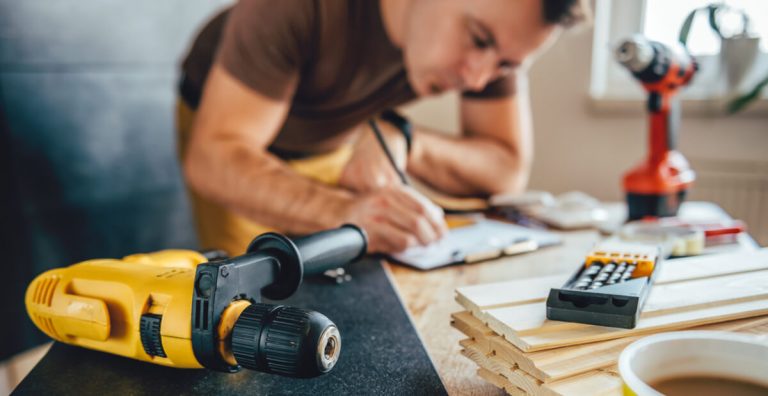
If you already know about standing desks, you have found out that they are not really that cheap. While other more affordable options like stand up desk converters that can be used on a standard table can cost about $150, most adjustable standing tables can cost $500 and up. However, as height-adjustable desk options drop in price, there are other DIY desk ideas one can use to save money and achieve the goal of getting an adjustable workstation.
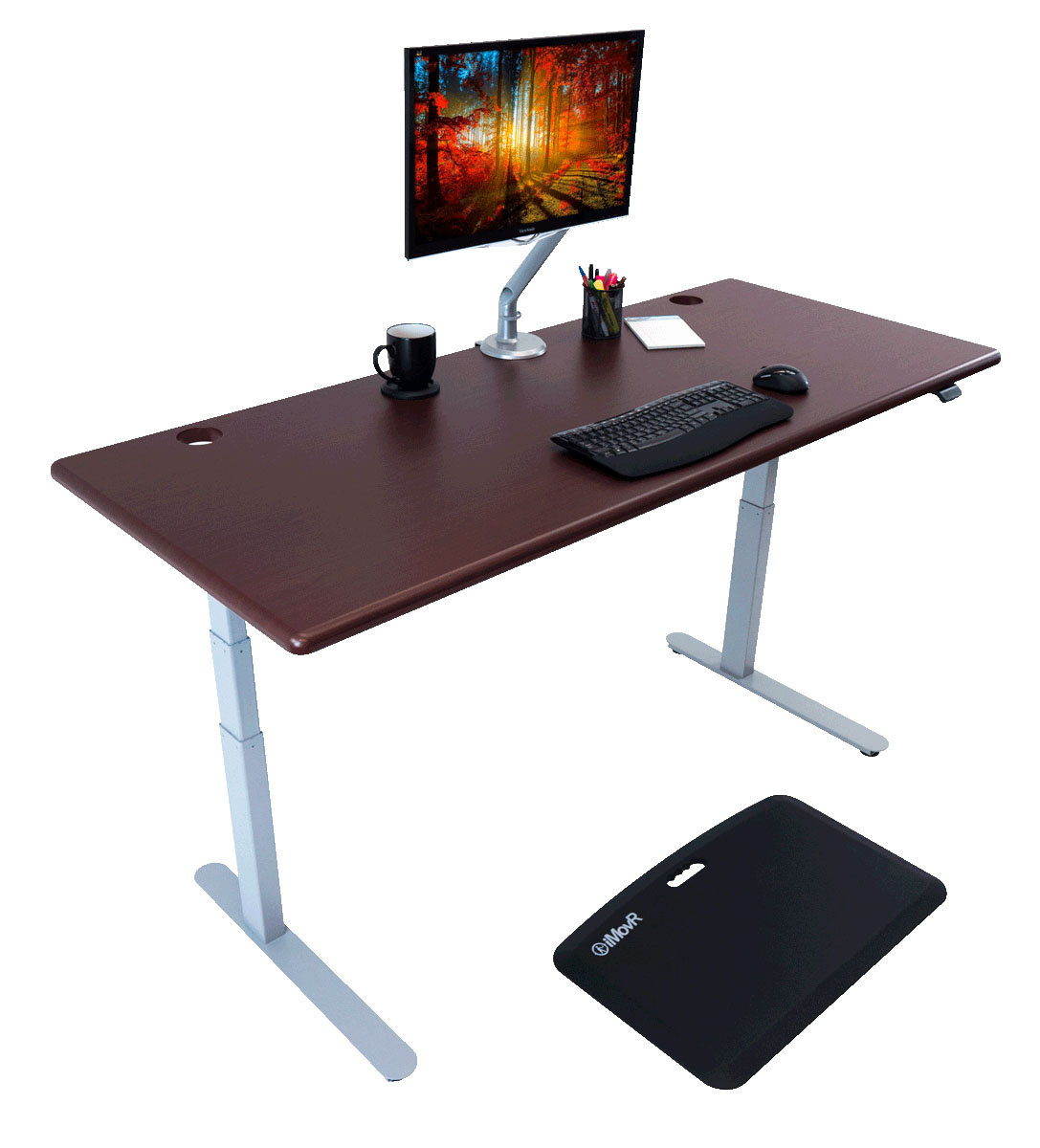
Why Building Your Own Standing Desk?
There are so many reasons that back up building your own standing desks solution, but the main one is usually to save money. There are options that might cost even more than regular sit-stand desks you can buy, but most people who decide to go with it do it because of the personalization possibilities. For example, if you want to build a standing desk or a height-adjustable desk, you can use custom colors and materials and set a specific height of the desk surface or add a customized finishing. You will also have an advantage if office rules or home capacity can’t contain a certain size of products.
What to Consider When Making A DIY Standing Desk
Before you can start working on your DIY desk designs, there are certain factors that you need to put into consideration. These factors include the build cost, ergonomics, and height adjustability.
The cost of building the product. When opting for a homemade standing desk, keep in mind that ready standing desks and converters are becoming cheaper on the market. Depending on the features you want and supplies needed, you might actually save more money by purchasing a manufactured stand-up desk converter.
Ergonomics behind it. Most manufacturers make sure that research is carried out on the ergonomics behind their products. That means they can go at any length of research to find out the most comfortable and right standing height to implement in products like sit-stand conference tables. When using DIY options, you won’t probably have the budget to perfect these details.
Desk height adjustability. When considering self-built standing desk projects, transitioning from sitting to standing and back is essential. Not all ideas we share in this article are adjustable. While making a standing work area is the goal, most people cannot actually stand for a long time. Building a table that allows for transition between the states should be put into consideration if you fall into this category.
Inspirational DIY Standing Desk Solutions
If you are a DIY enthusiast or someone who doesn’t mind going a few extra miles to create something, you will be intrigued by these inspirational DIY ideas for standing desks.
1. Cardboard Standing Desk Converter
This DIY solution is probably the easiest and the cheapest on our list. The idea is simple enough, so anyone could use it no matter the DIY skill level.
Pros
We love this idea just because it is effortless to make, cheap, and virtually anyone can get their hands on a cardboard DIY standing desk. When people see the word “DIY” around the internet, they start speculating on the process as “being too complicated,” meanwhile building a standing desk like this one proves that simple DIY practices do exist. This sit-stand converter just takes about a couple of cardboard boxes that rises your sitting workspace to a standing height. Just find a box that will be big and tall enough for you to work on comfortably.
Cons
It is made of cardboard. Cardboards, as you know, are in no way durable, and the stability of this DIY standing desk is questionable. However, one of the ways to make it a bit better is to make sure there’s something inside the box to make it havier thus more stable. Also, people buy sit-stand converters and standing desks because of their beautiful designs. As you might have guessed, a box won’t please anyon’s eye, unless you do some creative finishing.
2. DIY Standing Desk Converter with Storage Space
This is one of DIY standing desk projects that you can easily tackle at home. It is simple yet can go a long way to being an effective table converter. Unlike most converters, it is not an adjustable one. However, this solution has extra storage and desk space that can come in handy in many cases.
Pros
This project is at the DIY level “basic.” These are projects that don’t require a garage of tools or years of DIY experience. The only things you will need to use for this standing desk are plywood, hammer, nails, glue, and screws. Don’t forget to measure your desk’s length and width and make the converter an inch smaller on the sides.
You can also add finishing touches to this DIY project by painting and varnishing it. This converter can also be removed at any time. Although it might take some time if you have a two-monitor setup like the one on the image above.
Cons
What we don’t like about this DIY desk idea is that it is not adjustable. Although the product can be removed at any time, it comes off as a huge pain when you want to switch during the day from sitting to standing positions. However, you can solve this problem by converting only one half of your current table to a standing one then the other half can serve as a sitting table, providing there’s enough room.
3. A DIY Adjustable Standing Desk
I would start first by acknowledging the original designer of this DIY standing desk. One of the most widespread problems when building your own standing desk is the ability to make it adjustable. The unique design of this idea makes it very easy to solve that problem while taking only a minimal space.
Pros
Unlike other DIY standing desk ideas, this one does not take much space. You should give this project a try, using a center pole made out of metal for structure and plywood to construct a shelf for the monitor and a tray for the keyboard and mouse. This feature gives you the advantage of having an adjustable ergonomic keyboard tray.
Cons
If you are a person who likes keeping papers or documents around your workspace, this desk idea is not for you. This DIY standing desk looks minimalistic in design, and it is perfect for simple workstation setups. Another feature that is in question when it comes to this DIY desk is its stability. Its structure can hold a laptop, a keyboard, and a mouse, but it doesn’t look stable enough to hold a desktop computer.
4. Fixed Height Standing Desk
The video below teaches you how to build a semi-adjustable standing desk with just a few tools. It lays out how cheap and easy it can be to build a DIY standing desk from scratch for your home, office, or any other area.
Pros
This design is probably the easiest and cheapest way to build a fixed-height table. Finding places to get the equipment won’t seem like a hard task because you need to get probably plywood with piping and lumber materials to realize this standing desk idea.
This project is semi-adjustable because it can be adjusted, but unlike regular adjustable tables, it’s not that easy. However, one can buy different sizes of pipe fittings to adjust the standing desk.
Cons
The number one problem with this project is that it lacks keyboard trays, but you can make a separate keyboard tray or use an adjustable monitor to solve this problem. Also when it comes to stability, this DIY standing desk seems to quiver especially at its maximum height. Adding a crossbar can help quickly solve this issue.

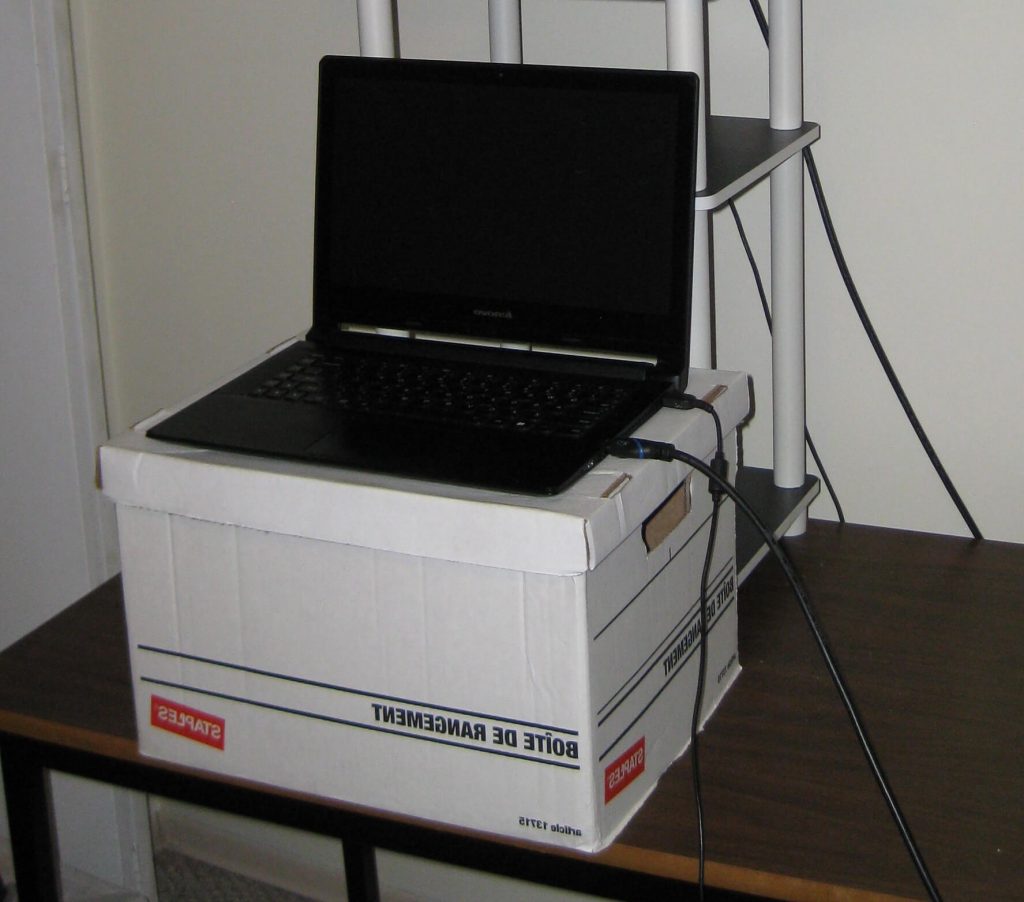
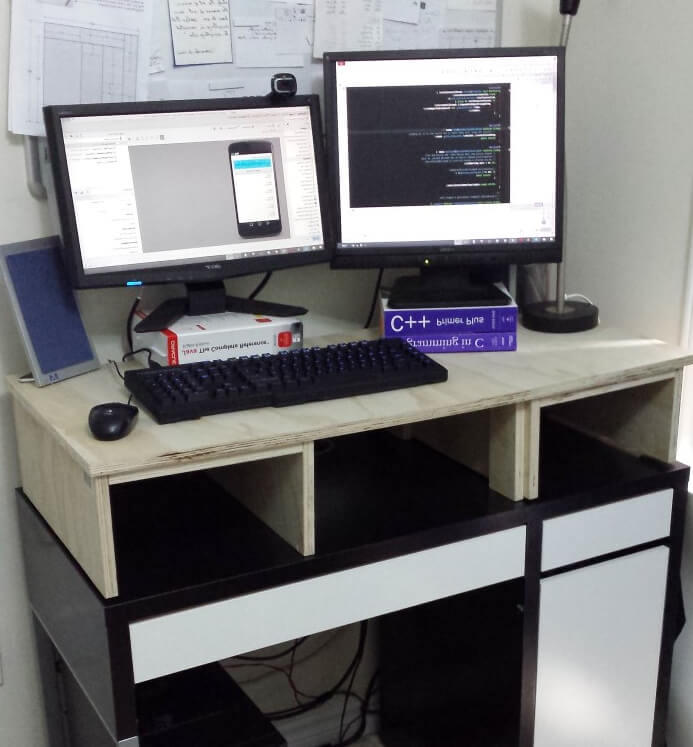
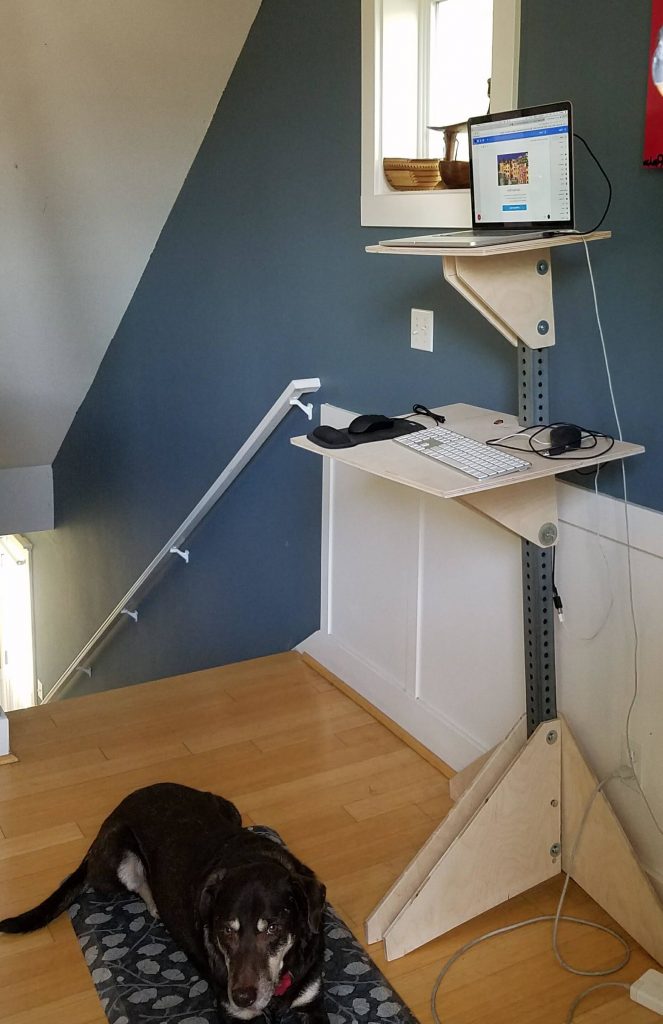
Comments